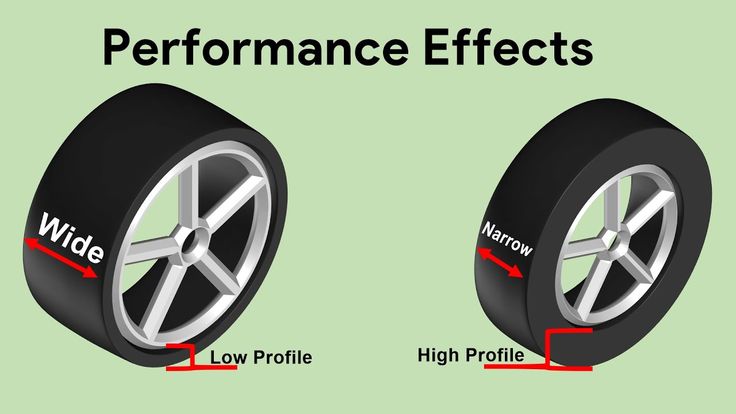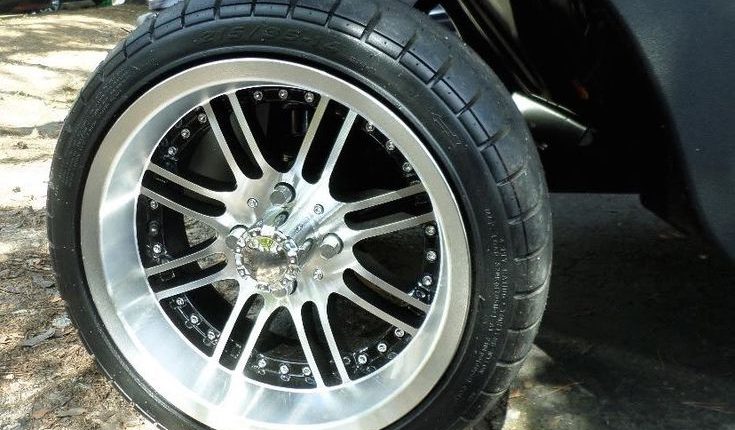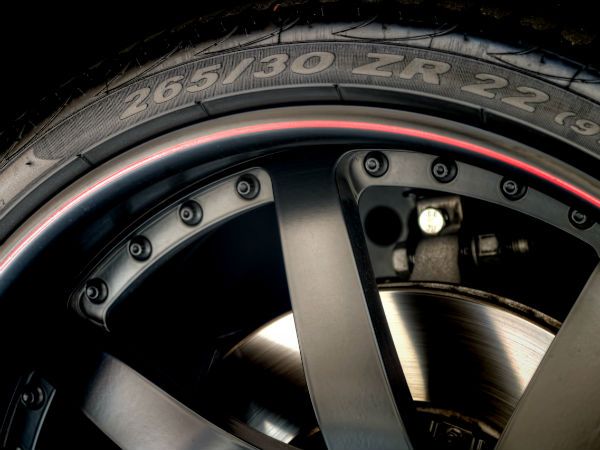If you’re thinking of swapping out your regular tires to low profile tires, this article is made for you because we will make clear everything about the advantages also disadvantages of this type of tire in this post to help you give a decision about whether we should buy the low profile or not?
Contents
What Are Low Profile Tires?
When it comes to low-profile tires, it is necessary to talk about the 2 terms first:
- Tire sidewall: is understood as the rubber part from the edge of the tread to the bead of your tire.
- Aspect ratio: So what is the aspect ratio of a tire – is the percentage ratio between the tire sidewall and the tire width?

What are the bases to determine if your car has a low-profile tire? To understand low-profile tires, we can simply base it on the aspect ratio tire. According to the tire manufacturer’s calculation, low-profile tires have an aspect ratio of 55 or less. For example, P235/40R18 means that the sidewall height is 40% of the 235mm long width, is the sidewall is 94mm high. The driver can see this parameter on the tire.
Nowadays, many drivers use low-profile tires for their cars because they assume that this type of tire has several outstanding features over a high-profile tire. So is it true? Let’s go through it together some pros of the low-profile tire:
>> Related post: Tire Speed Rating: What You Need to Know
3 Advantages Of Low Profile Tires
Giving your car more stylish
Low-profile tires can improve the aesthetics of the vehicle’s exterior, making your car look sportier and helping you to fit larger eye-catching alloys because they have more room to add larger brakes. The use of low-profile tires also means larger rims, you can fit larger brakes, and better brake cooling efficiency. Now, low-profile tires are mainly used for sports cars because they look very aesthetic.
Better cornering handling
Low-profile tires account for performance improvements in better handling and high-intensity braking. The thinner the tire sidewall, the more accurate the vehicle will be and the more realistic the driving experience, especially when your car is cornering or running at high speed. However, in return, the car runs more bumpy, because the buffer between the rim and the road surface is small. Tires are also part of the vehicle’s suspension system. With a vehicle with low-profile tires, the driver can clearly feel every speed bump and unevenness of the road, unless the suspension has been designed to accommodate vehicles with low-profile tires.
Improve the grip for your car
Low-profile tires have large rubber treads, so they give the car better traction, and in return, the reverberation noise is also louder. In addition, thin-walled tires only promote the advantage of traction in flat and dry road conditions, and when it rains, it is a minus point.

Disadvantages of low-profile tires
- Prone to get damaged: In good conditions of driving and storage, the durability of low-profile tires is similar to that of regular tires because the tread and fiber structure of the two types is not much different. However, low-profile tires are often used for vehicles operating with high performance or bad working conditions so they will be more prone to damage.
- Making noise in some situations: If you want your car to have a sportier look, you can choose large wheels, and low-profile tires with a suspension that has been designed to accommodate vehicles with low-profile tires. However, tires are also part of the suspension system, so replacing them, will cause noise for your car when driving and the suspension performance may not be up to the requirements.
- In addition, low-profile tires make the cushion between the rim and the road smaller, so the driver can clearly feel the uneven surface of the road.
- With the imperfection road (bumpy or potholes), just driving by the tire can easily be “cut” to deflate, or tear the tire. Once this happens, you have to replace the tire completely with a new one that cannot be patched. In particular, compared to normal tires, low-profile tires will cost a little higher. Therefore, drivers traveling on low-profile tires need to check tire pressure more often. If the tire is too under-inflated, your car just needs to run through a small pothole, which can cause the wheel to fail faster.
Obviously, in addition to advantages such as increasing aesthetics, making the vehicle much better, and improving traction or braking efficiency, low-profile tires also have many shortcomings. Many drivers who use low-profile tires complain that because they are thinner than normal tires, the tires are more prone to punctures and shocks, and the wheel rims fail more quickly.
FAQs
Low-profile vs high-profile tires: Which one is better?
The best option will depend on both your driving need and the tire functions. But before making a decision, you should know the difference between the two types of tires. Low-profile tires will have a wider tread and a shorter sidewall. These features give good grip and handling. While high-profile tires have higher sidewall height and small section width. High-profile tires are proven to have ride comfort, at an inexpensive cost and for larger vehicles whereas low-profile tires are known for a better steering response and handling cornering performance. In addition to the advantages, both of them also have their cons and you should consider them before buying the tire.
Are low-profile tires better for speed?
A question is raised by many drivers could low-profile tires increase the car’s speed? Our answer is “Yes”. Because this tire has a lower diameter which will improve the gearing ratio. Low-profile tires boost handling efficiency by reducing sidewall distortion during driving and cornering of course the result will have also higher inflation. That’s why low-profile tires are always equipped for sports vehicles. It does not give an eye-catching look but also helps your car reach the top speed.
Do low-profile tires consume more fuel?
Fortunately, low-profile tires are known for having better fuel economy. A vehicle with a low-profile tire can reduce 15% to 20% of the fuel consumption when driving at low speeds and up to 35% at higher speeds. So why? Because larger tires will be heavy and have a higher rotation resistance than smaller tires your car will need more effort to get the tire move, and at this time your car will consume more fuel in the large tires.



